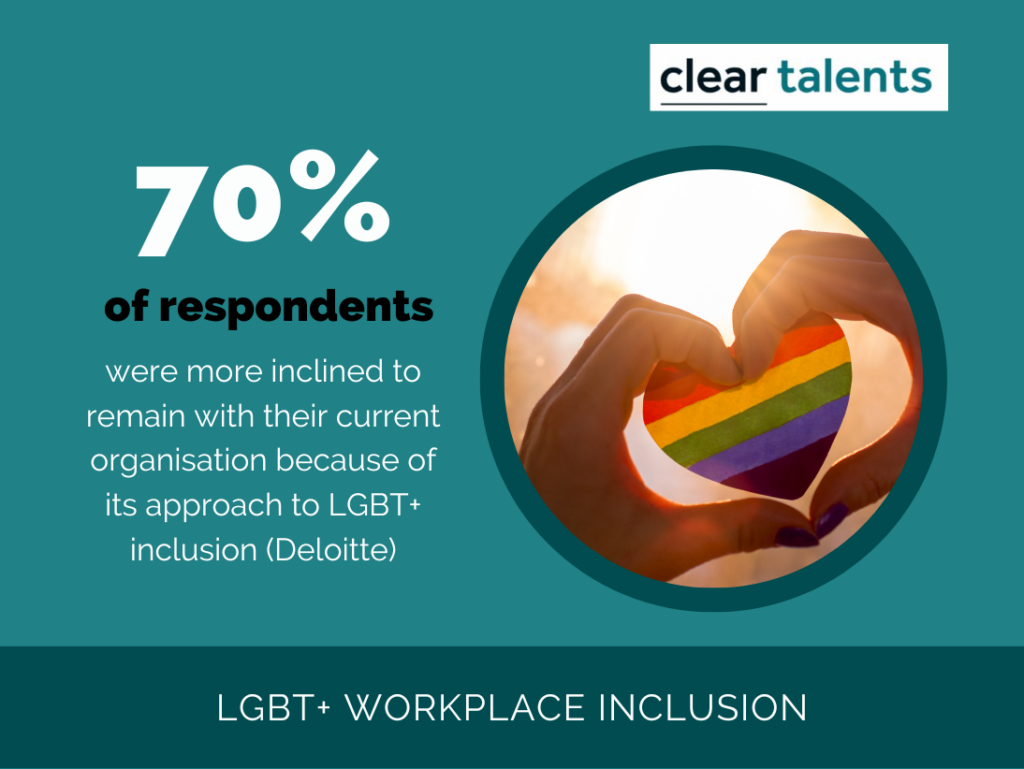How to create an inclusive workplace for LGBT+ employees
February is LGBT History Month. As charity Stonewall says it is an opportunity to celebrate the over 1.5 million LGBTQ+ people in the UK who have already made history.
Yet, the workplace, where people spend a significant part of their daily lives, isn’t always inclusive. Learn how you can provide inclusive recruitment for your business.
As the CIPD reports, LGBT+ employees report lower levels of:
- psychological safety,
- wellbeing,
- job satisfaction.

LGBT+ employees also reported poorer workplace relationships. Many feel unable to bring their authentic selves to work. An inability to be authentic in the workplace has a negative impact and may result in mental health challenges and social isolation.
By comparison, an inclusive workplace increases productivity and performance.
So, how inclusive is your workplace for LGBT+ employees?
How inclusive is today’s workplace?
You may think you have an inclusive workplace, but surveys reveal a mixed picture globally.
Four in 10 LGB+ and over five in 10 trans employees experienced workplace conflict in the last year.
4 in 10 LGBT+ employees experienced workplace conflict in the last year.
Over 20% of LGBT+ workers experience discrimination during recruitment and promotion, and over a third worry about possible bias (CIPD).
Yet, employees that believe co-workers are supportive are more likely to be satisfied at work and in life.
- Find out more and claim a free trial of our digital tool
Why you should create an inclusive workplace
An inclusive workplace is good for everyone. A survey by Deloitte found that where companies have introduced LGBT+ initiatives, it contributed to a sense of belonging. Nearly all (95%) of respondents said initiatives had led to meaningful support for LGBT+ employees across organisations.
It is also good for the organisation. Supportive policies and practices have a positive link to increased productivity and performance. Being inclusive can aid retention.
Deloitte’s survey found that over 70% of employees were likelier to remain with their current employer because of its approach to LGBT+ inclusion.

It is also a legal requirement. Under The Equality Act 2010, sexual preference is a protected characteristic. The Act also says that you must not discriminate against anyone with a different gender than the one assigned at birth.
Tips for creating an inclusive workplace
So, how do you create an inclusive workplace that supports LGBT+ employees? Tips include:
1. Ensure your policies are inclusive of LGBT+ employees.
2. Encourage employee resource groups to support LGBT+ employees and encourage allyship.
3. Promote allyships across your organisation and encourage everyone to speak out.
4. Create psychological safety by ensuring all employees know acceptable and unacceptable behaviour.
5. Get buy-in from senior leadership.
For more details on creating an inclusive workplace for LGBT+ employees, view our Factsheet.